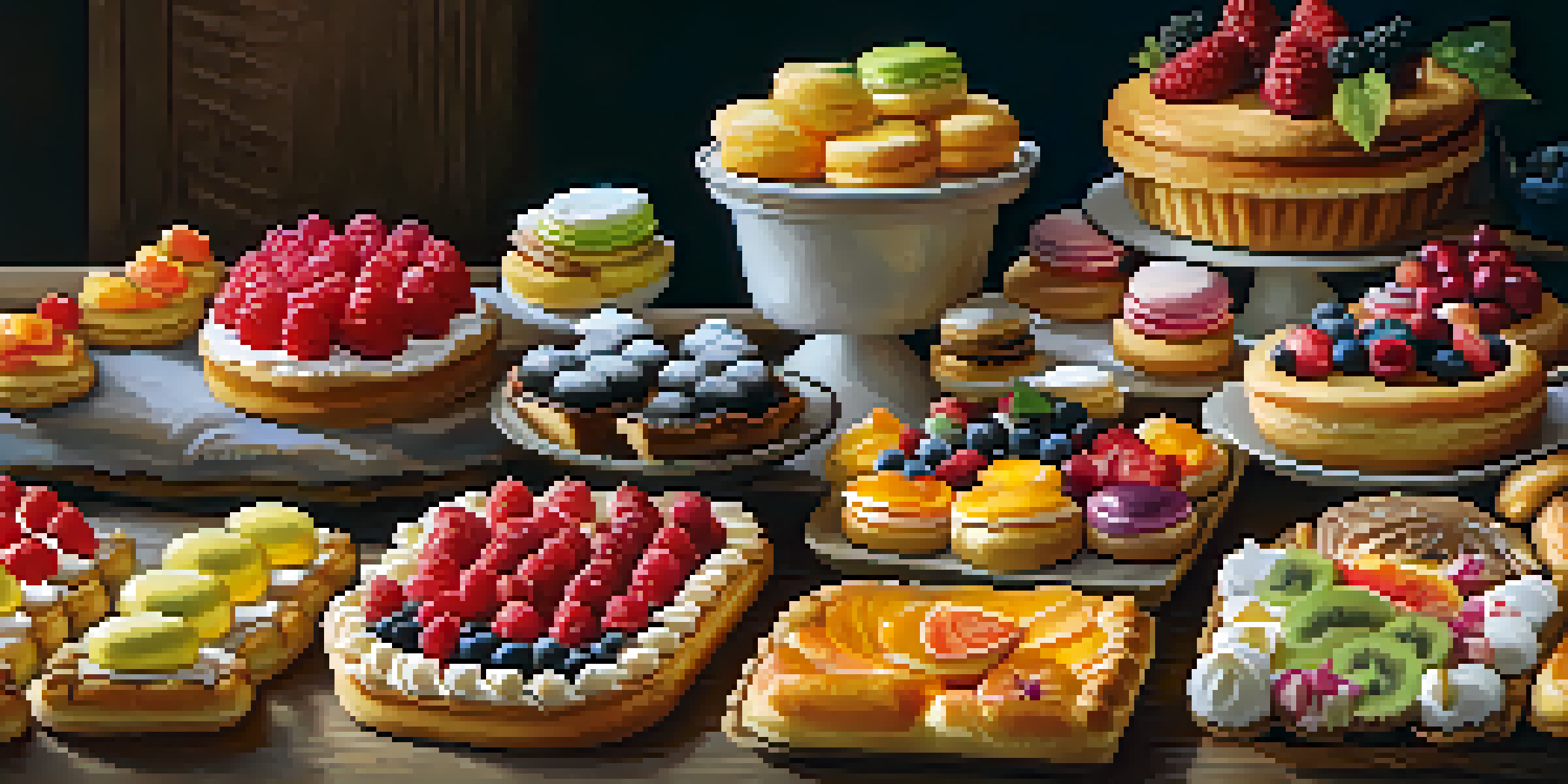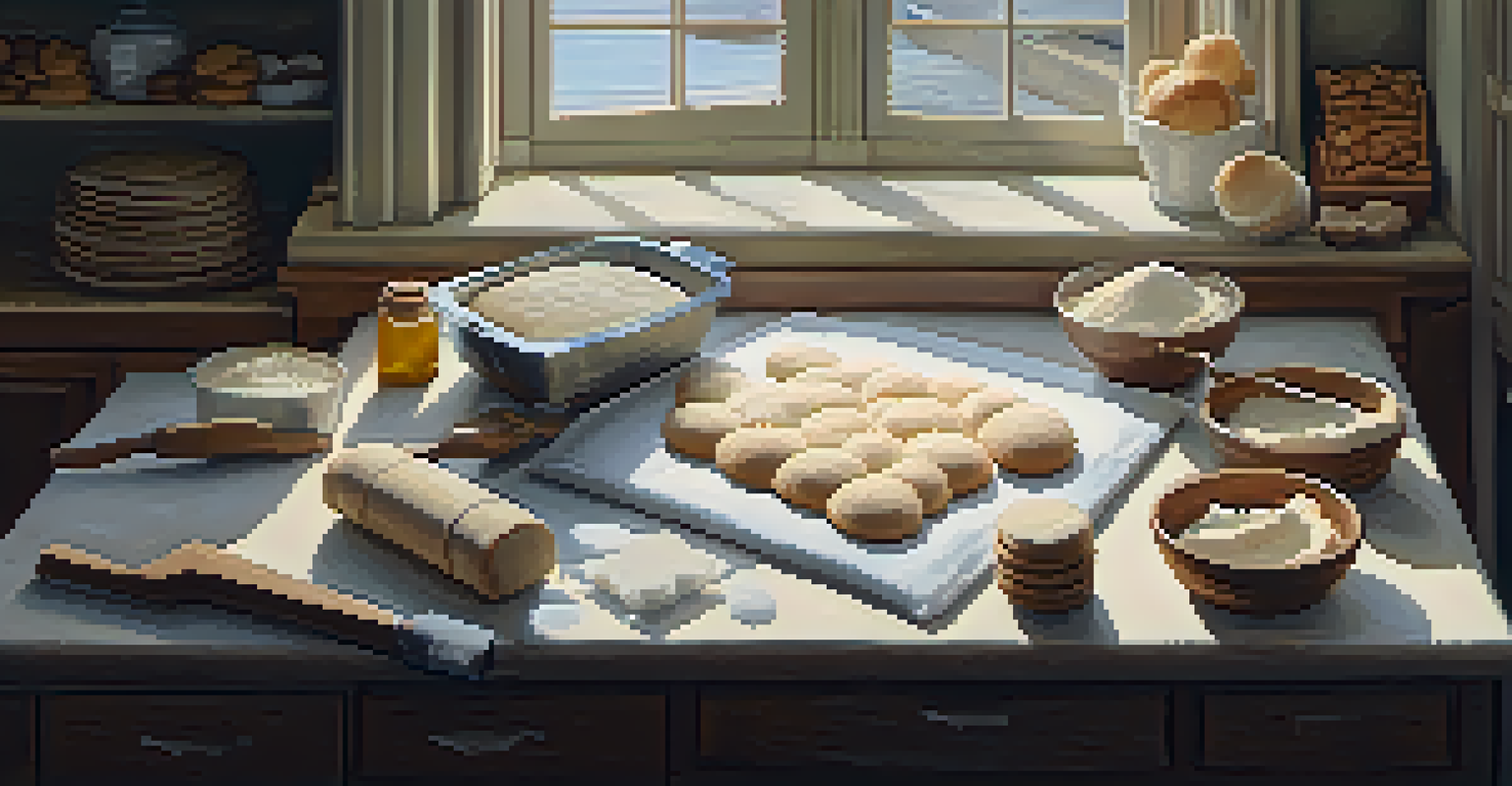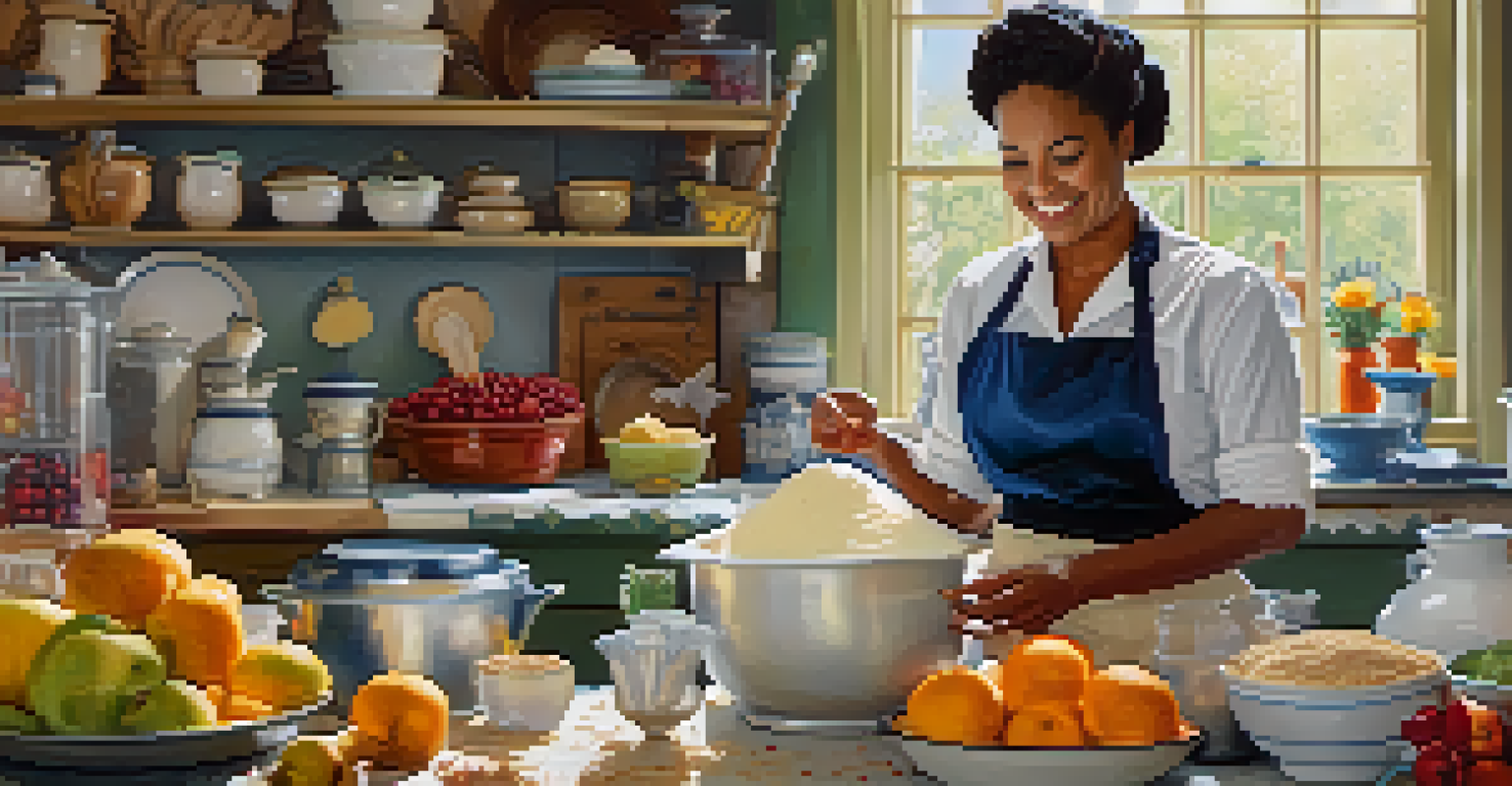Baking Techniques: Understanding the Science Behind Pastries

The Role of Ingredients in Pastry Making
Understanding the ingredients is the first step to mastering pastries. Each ingredient plays a crucial role; for instance, flour provides structure, while fats contribute to tenderness. Without the right balance, your pastry can quickly turn from flakey to flat.
Baking is both an art and a science, and the beauty is in the details.
Consider the difference between cake flour and all-purpose flour. Cake flour has a lower protein content, which leads to a softer texture, making it ideal for delicate pastries. Knowing these nuances allows bakers to tailor their recipes for the desired outcome.
Additionally, using fresh ingredients can significantly impact flavor and texture. For example, fresh butter creates a richer taste compared to older, stale options. This emphasizes the importance of quality in every baking project.
Understanding the Importance of Temperature
Temperature plays a pivotal role in baking, influencing everything from mixing to cooking times. Cold butter is essential for making flaky pastries, as it creates pockets of steam that help the dough rise. If the butter is too warm, it can lead to a dense texture.

Similarly, the temperature of your environment matters. If you're in a hot kitchen, your dough may become too soft to handle. On the other hand, a chilly kitchen can slow down the process, making it hard to achieve the right consistency.
Ingredients Shape Pastry Success
Understanding the role of each ingredient, from flour to fats, is essential for creating the perfect pastry.
So, how do you manage these temperature challenges? One approach is to chill your tools and ingredients before starting. This simple step can make a world of difference in the final product, ensuring your pastries are light and airy.
The Science of Mixing Techniques
Mixing is more than just combining ingredients; it's a science. Different mixing methods produce varied textures and structures in pastries. For instance, creaming butter and sugar together incorporates air, creating a light and fluffy mixture ideal for cakes.
The secret to great baking is patience, practice, and a pinch of creativity.
Conversely, over-mixing can lead to tough pastries, especially when working with doughs like puff pastry. This occurs because excess mixing develops gluten, which can result in a chewy texture rather than the desired flakiness.
Understanding when to mix and when to stop is crucial. A good rule of thumb is to mix until just combined for doughs that require tenderness and to mix longer for those that need structure. This balance is key in achieving the perfect pastry.
The Art of Rolling and Shaping Dough
Rolling and shaping dough is both an art and a science. The goal is to achieve an even thickness, which ensures uniform cooking. If one part is too thick while another is too thin, it can lead to uneven baking, affecting both texture and taste.
When rolling dough, a light touch is essential. Too much pressure can cause the dough to become tough, while not enough may result in uneven thickness. Using a gentle, even pressure will help maintain the dough's integrity.
Temperature Affects Baking Results
Managing ingredient and environment temperatures is crucial for achieving the desired texture and rise in pastries.
Additionally, using a dusting of flour can prevent sticking but be careful not to overdo it. Too much flour can make the pastry dry. The right balance will help you achieve beautifully shaped pastries that are ready for the oven.
The Role of Baking and Oven Techniques
Baking is where the magic happens, but understanding your oven is crucial. Every oven has hot spots and varying temperatures, which can affect baking times and results. Using an oven thermometer can help you monitor and adjust your baking environment.
Another important aspect is preheating the oven. A properly preheated oven ensures that your pastries start cooking immediately, which is especially important for items like puff pastry that rely on steam for rise.
Additionally, consider using baking stones or sheets to create an even cooking surface. These tools help distribute heat more uniformly, resulting in pastries that are perfectly baked all around.
Understanding Leavening Agents
Leavening agents are the secret behind the rise in many pastries. Whether using baking powder, baking soda, or yeast, each agent works in a unique way. For instance, baking powder produces carbon dioxide when mixed with moisture and heat, creating that delightful lift.
Yeast, on the other hand, requires time to ferment and develop flavor, making it ideal for richer pastries like brioche. Understanding how these agents work allows bakers to choose the right one for their specific pastry needs.
Practice Enhances Baking Skills
Regular practice and reflection on baking techniques help improve skills and foster creativity in pastry making.
Experimenting with different leavening agents can also lead to creative results. For example, combining baking soda and vinegar can give a unique texture to your pastries, making baking a fun science experiment in the kitchen.
Finishing Touches: Glazes and Toppings
The finishing touches on your pastries can elevate them from good to extraordinary. Glazes, for instance, add not just flavor but also a beautiful sheen. A simple sugar glaze can give a delightful sweetness and a glossy finish to pastries like cinnamon rolls.
Toppings like nuts, fruits, or chocolate can also enhance both the appearance and taste. Think of a fruit tart topped with fresh berries; it’s not just visually appealing but also adds a burst of flavor with every bite.

Remember, presentation matters. A well-decorated pastry can make a lasting impression. Playing with colors, textures, and shapes can make your pastries not only delicious but also a feast for the eyes.
Practice Makes Perfect in Pastry Baking
Like any skill, mastering baking techniques takes practice. The more you bake, the more comfortable you become with the ingredients, tools, and methods. Don't be discouraged by initial failures; they are simply stepping stones on your journey.
Consider keeping a baking journal to track your successes and areas for improvement. Note down what worked, what didn’t, and how you can adjust for next time. This reflective practice can enhance your skills over time.
Lastly, embrace creativity in your baking journey. Experiment with flavors and techniques to find what works best for you. After all, the joy of baking lies not just in the final product but in the process itself.